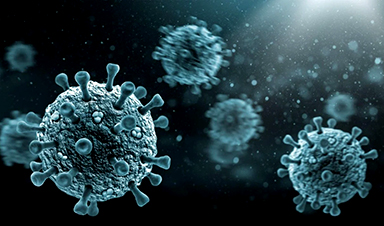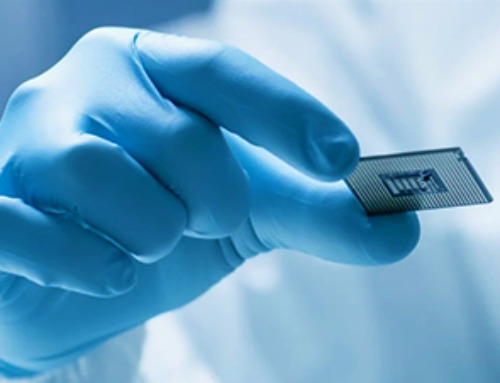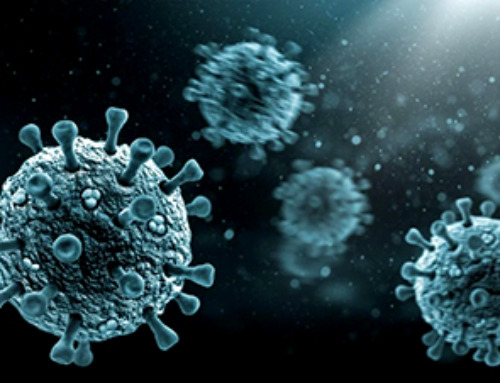Magnetic bacteria possess extraordinary capabilities due to the magnetic nanoparticles, the magnetosomes, which are concatenated inside their cells. A research team at the University of Bayreuth has now transferred all of the approximately 30 genes responsible for the production of these particles to non-magnetic bacteria in a broad series of experiments.
Based on extensive studies, the researchers initially identified 25 species of non-magnetic proteobacteria—by far the most extensive domain of bacteria—that are particularly suitable for gene transfer and for studying magnetosome formation. Both biochemical properties and the availability of specific gene sequences were decisive factors.
Magnetization was successful in seven species: these bacteria continuously produce magnetosomes in which iron-containing magnetite crystals are chained together in a manner similar to that in the donor bacterium Magnetospirillum gryphiswaldense.
“In terms of future applications in biomedicine, it is particularly promising that two species of bacteria that we have successfully genetically engineered are already widely used in biotechnology.”
“According to the current state of research, they are well compatible with human cells. This opens up new perspectives for a variety of biomedical applications—for example, for microrobot-controlled transport of active pharmaceutical ingredients, for magnetic imaging techniques, or even for optimizations of hyperthermia cancer therapy,” says the first author of the new study, Dr. Marina Dziuba, who is a research associate at the Microbiology research group in Bayreuth.
The Bayreuth researchers have studied the magnetosomes produced by the new transgenic bacterial strains in more detail and thus identified a number of factors that could be causally involved in magnetosome formation.
Comparison between the genome of these strains and the genome of those genetically modified bacteria that failed to produce magnetosomes has also led to valuable insights. There is much evidence to suggest that the magnetosome formation of transgenic bacterial strains is closely related to their ability to photosynthesize or to engage in oxygen-independent, so-called anaerobic respiration processes.
Overall, the new study shows that it is not single or a few particular genes that transgenic bacteria lack when they are incapable of magnetosome formation. Rather, the decisive factor for them to synthesize magnetosomes after receiving the foreign gene clusters is a combination of certain metabolic properties and the ability to efficiently use the genetic information of the foreign genes to produce cellular proteins.
“Our study shows that further research is needed to understand the biosynthesis of magnetosomes in detail, identify barriers to their transfer, and develop strategies to overcome them. At the same time, however, our results shed new light on metabolic processes that support magnetosome formation. They therefore provide a framework for future investigations on the way to designing new strains of biocompatible magnetic bacteria tailored for biomedical and biotechnological innovations,” explains Prof. Dr. Dirk Schüler, Chair of Microbiology at the University of Bayreuth.
In earlier research, the Bayreuth team had already succeeded in introducing the genes responsible for magnetosome formation from the bacterium Magnetospirillum gryphiswaldense—a model organism for research—into the genome of non-magnetic bacteria. However, in only a few cases, this gene transfer resulted in genetically modified bacteria that, in turn, began to form magnetosomes.
It remained completely unclear which factors might influence whether transgenic bacteria produced magnetosomes. Against this background, the study now published, in which a research partner at the University of Pannonia in Veszprém/Hungary also participated, provides important new impetus for the targeted magnetization of living cells.
News
Enhanced Antibacterial Polylactic Acid-Curcumin Nanofibers for Wound Dressing
Background Wound healing is a complex physiological process that can be compromised by infection and impaired tissue regeneration. Conventional dressings, typically made from natural fibers such as cotton or linen, offer limited functionality. Nanofiber [...]
Global Nanomaterial Regulation: A Country-by-Country Comparison
Nanomaterials are materials with at least one dimension smaller than 100 nanometres (about 100,000 times thinner than a human hair). Because of their tiny size, they have unique properties that can be useful in [...]
Pandemic Potential: Scientists Discover 3 Hotspots of Deadly Emerging Disease in the US
Virginia Tech researchers discovered six new rodent carriers of hantavirus and identified U.S. hotspots, highlighting the virus’s adaptability and the impact of climate and ecology on its spread. Hantavirus recently drew public attention following reports [...]
Studies detail high rates of long COVID among healthcare, dental workers
Researchers have estimated approximately 8% of Americas have ever experienced long COVID, or lasting symptoms, following an acute COVID-19 infection. Now two recent international studies suggest that the percentage is much higher among healthcare workers [...]
Melting Arctic Ice May Unleash Ancient Deadly Diseases, Scientists Warn
Melting Arctic ice increases human and animal interactions, raising the risk of infectious disease spread. Researchers urge early intervention and surveillance. Climate change is opening new pathways for the spread of infectious diseases such [...]
Scientists May Have Found a Secret Weapon To Stop Pancreatic Cancer Before It Starts
Researchers at Cold Spring Harbor Laboratory have found that blocking the FGFR2 and EGFR genes can stop early-stage pancreatic cancer from progressing, offering a promising path toward prevention. Pancreatic cancer is expected to become [...]
Breakthrough Drug Restores Vision: Researchers Successfully Reverse Retinal Damage
Blocking the PROX1 protein allowed KAIST researchers to regenerate damaged retinas and restore vision in mice. Vision is one of the most important human senses, yet more than 300 million people around the world are at [...]
Differentiating cancerous and healthy cells through motion analysis
Researchers from Tokyo Metropolitan University have found that the motion of unlabeled cells can be used to tell whether they are cancerous or healthy. They observed malignant fibrosarcoma [...]
This Tiny Cellular Gate Could Be the Key to Curing Cancer – And Regrowing Hair
After more than five decades of mystery, scientists have finally unveiled the detailed structure and function of a long-theorized molecular machine in our mitochondria — the mitochondrial pyruvate carrier. This microscopic gatekeeper controls how [...]
Unlocking Vision’s Secrets: Researchers Reveal 3D Structure of Key Eye Protein
Researchers have uncovered the 3D structure of RBP3, a key protein in vision, revealing how it transports retinoids and fatty acids and how its dysfunction may lead to retinal diseases. Proteins play a critical [...]
5 Key Facts About Nanoplastics and How They Affect the Human Body
Nanoplastics are typically defined as plastic particles smaller than 1000 nanometers. These particles are increasingly being detected in human tissues: they can bypass biological barriers, accumulate in organs, and may influence health in ways [...]
Measles Is Back: Doctors Warn of Dangerous Surge Across the U.S.
Parents are encouraged to contact their pediatrician if their child has been exposed to measles or is showing symptoms. Pediatric infectious disease experts are emphasizing the critical importance of measles vaccination, as the highly [...]
AI at the Speed of Light: How Silicon Photonics Are Reinventing Hardware
A cutting-edge AI acceleration platform powered by light rather than electricity could revolutionize how AI is trained and deployed. Using photonic integrated circuits made from advanced III-V semiconductors, researchers have developed a system that vastly [...]
A Grain of Brain, 523 Million Synapses, Most Complicated Neuroscience Experiment Ever Attempted
A team of over 150 scientists has achieved what once seemed impossible: a complete wiring and activity map of a tiny section of a mammalian brain. This feat, part of the MICrONS Project, rivals [...]
The Secret “Radar” Bacteria Use To Outsmart Their Enemies
A chemical radar allows bacteria to sense and eliminate predators. Investigating how microorganisms communicate deepens our understanding of the complex ecological interactions that shape our environment is an area of key focus for the [...]
Psychologists explore ethical issues associated with human-AI relationships
It's becoming increasingly commonplace for people to develop intimate, long-term relationships with artificial intelligence (AI) technologies. At their extreme, people have "married" their AI companions in non-legally binding ceremonies, and at least two people [...]





















